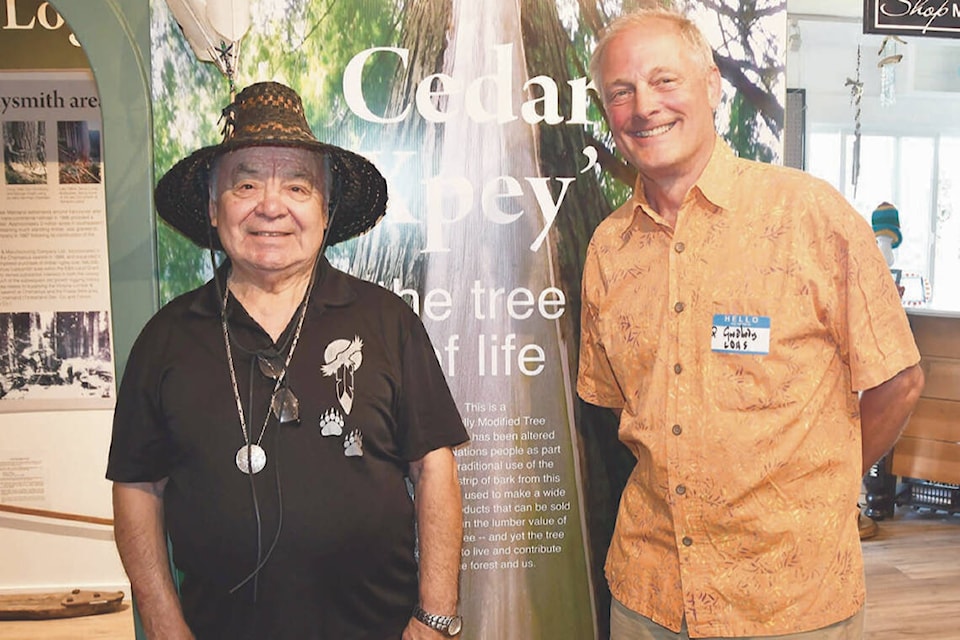BY DUCK PATERSON
Ladysmith Museum’s new exhibit examines the community’s place amidst the forests of Vancouver Island.
The Ladysmith and District Historical Society along with the Ecoforestry Institute Society have partnered on the newest exhibit at the museum on First Avenue. Treemendous: Our Fascinating Forests opened to the public on June 28.
At the exhibit’s opening, Stz’uminus elder George Harris shared stories relating to the continuing importance of the forest to the Stz’umimus First Nation. He loaned a number of cedar artifacts to the exhibit, including several paddles which came from his long career in canoe racing.
The exhibit, which has been in the planning stages for months, was all done by volunteers from the local society.
“Rather than just focusing on the past, the museum plays a role as a learning centre in which the present is explained through examining the past, thus providing a foundation for charting a way to the future,” said Quentin Goodbody, president of the historical society. “And that is how the Treemendous exhibit is designed.”
The exhibit starts by looking at the growth of forests, focusing on the coastal Douglas fir. It then introduces the importance of forests to the Indigenous Peoples of the Pacific Northwest, provides glimpse of their knowledge gained from millennia of observation and familiarity, and explains some of their forest management practices. The exhibit moves on to commercial exploitation of forests.
“To the early settlers of the 1860s and ’70s, the forest must have been an awesome sight: stands of massive, stately trees continuing, unbroken, to the horizon,” Goodbody said. “Trees to the shoreline posed a barrier to communication and farming. Clearing of homesteads was done with axe and oxen. This was followed by the rapid advance of commercial logging.”
He noted that prehistoric forests deeply influenced the commercial history of the region, as Cretaceous forests and peats provided the coals that prompted settlement in colonial times.
The exhibit follows the history of local logging, up to and including the two active sawmills in Ladysmith Harbour which form an important part of the town’s economy.
Next, the exhibit looks to the future, examining current scientific understanding of forest ecology and dynamics, the effects of climate change and the threats the forest now faces.
“What will our future forests look like? Well, they are not the same as they were yesterday and will not be the same as today, with much of this change arguably due to us,” Goodbody said. “It is vital we look after our forests. Our environment and future depends on it. We all have a role to play.”
Cheryl Bancroft envisioned the exhibit, she and Goodbody researched the subject, and the construction of the exhibit was co-ordinated by Gord Filewych and Goodbody. Western Forest Products sponsored the printing, and the panels were produced by Straightline Graphics and Signs.
The public is encouraged to come check out the exhibit. Admission is free, though any donations go toward keeping the museum operating. The museum is open daily from 10 a.m. to 4 p.m.
READ ALSO: Ladysmith celebrates town’s forestry heritage
editor@nanaimobulletin.com
Like us on Facebook and follow us on Twitter
